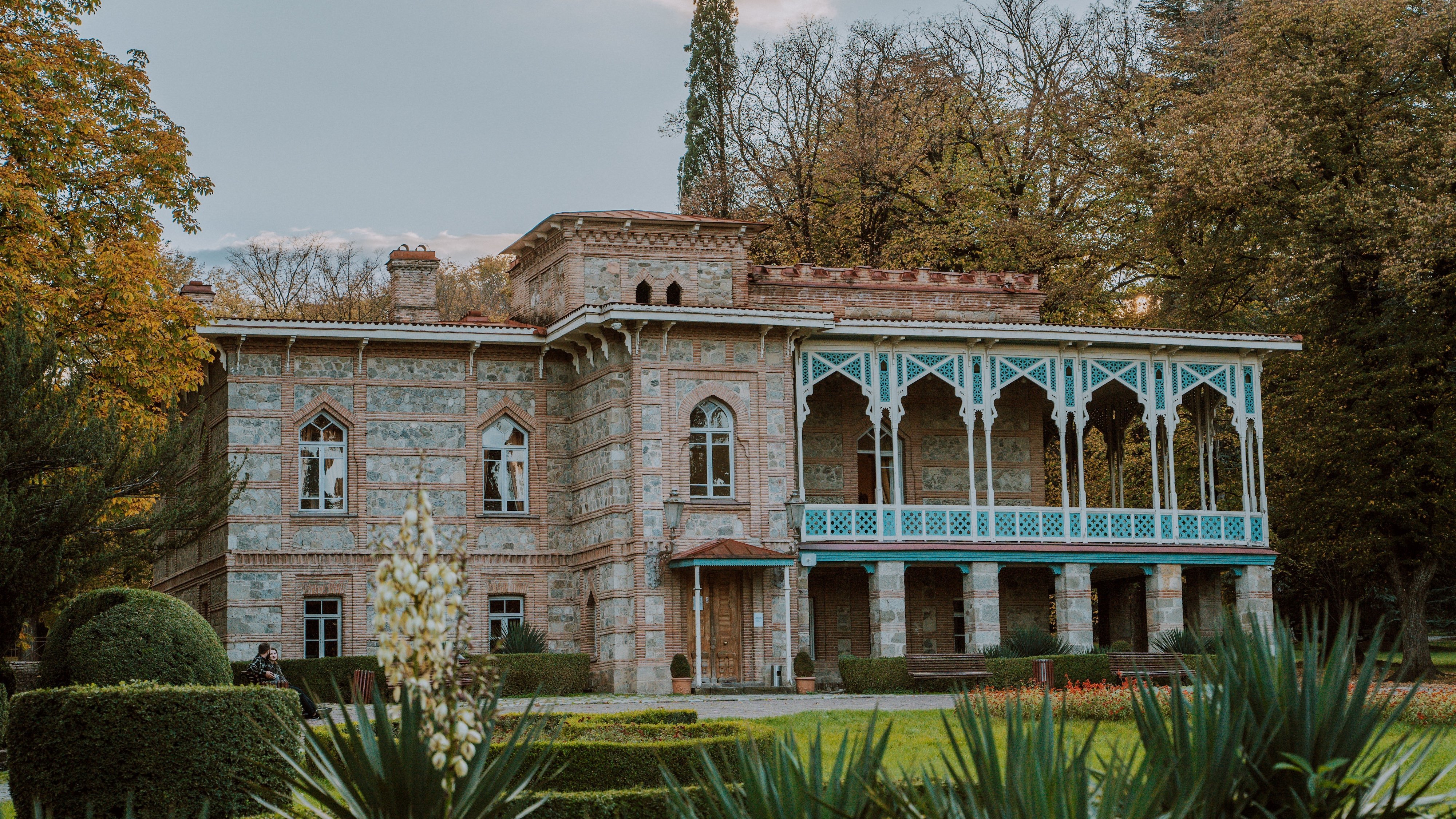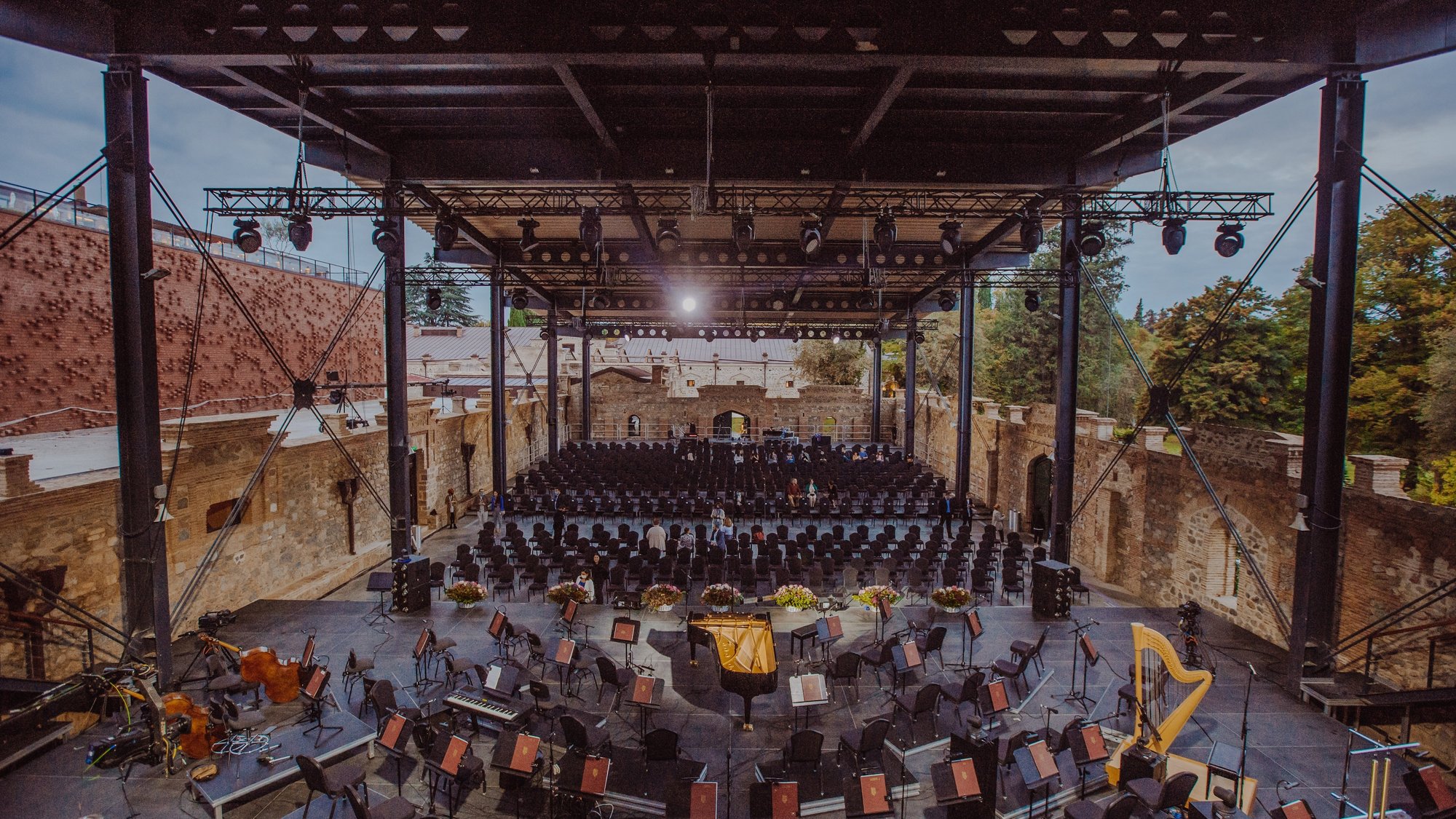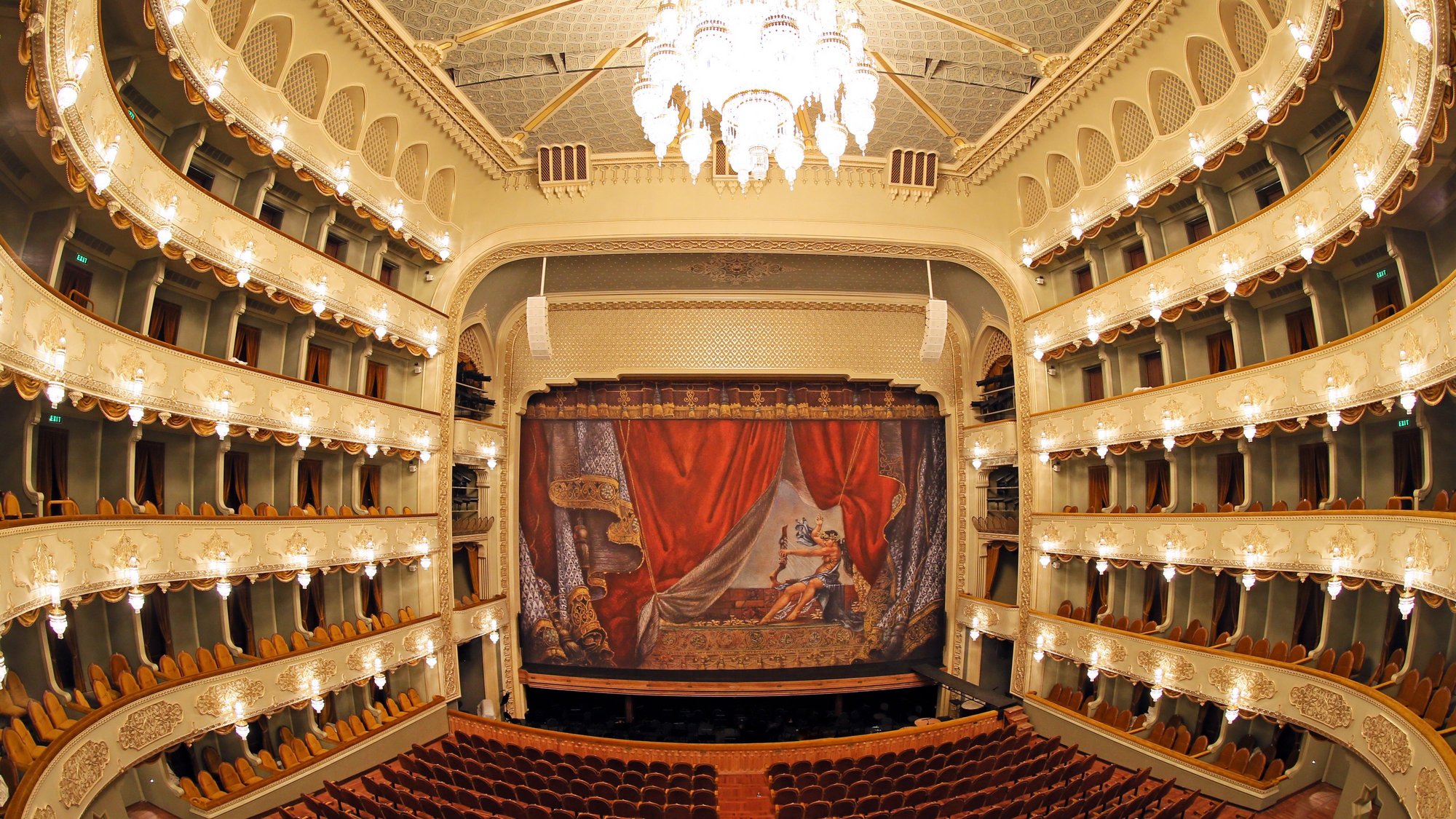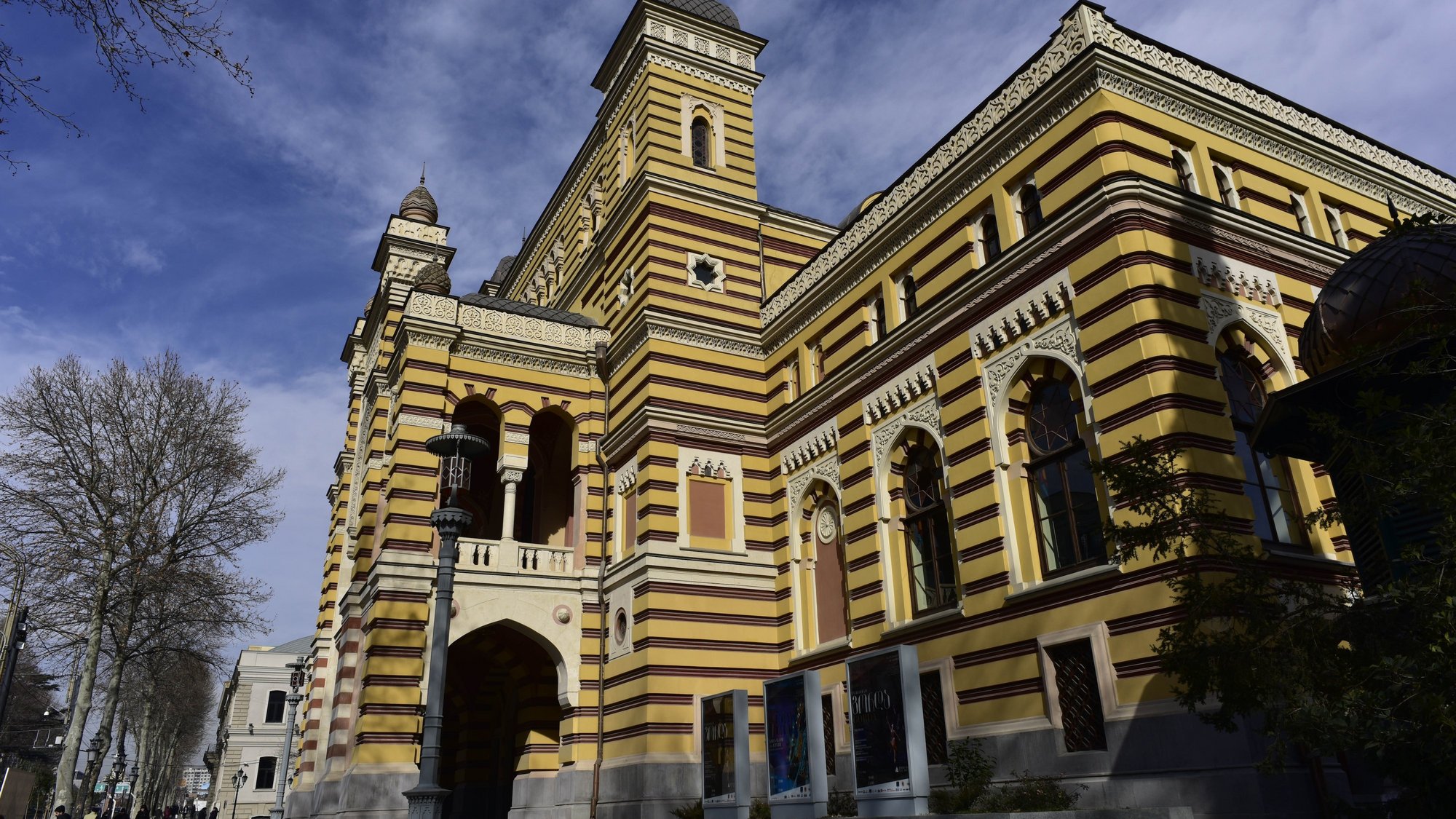
Übersicht
From a picturesque vineyard with a literary and historical background to an opera house that was burnt to the ground, rebuilt, and again destroyed before being restored to its current splendour - the two concert venues for our guest performance in Georgia hold many stories in their walls. We take a look at the history books.
A cellar full of treasures
The Tsinandali winery was founded in 1886 by Prince Alexander Chavchavadze, a prominent Georgian poet and military general. His poems deal with the longing for the glorious Georgia of the Middle Ages; he was a key figure in the struggle for Georgian independence. Chavchavadze quickly turned his estate into a cultural epicentre by organising concerts and inviting intellectuals such as Alexandre Dumas and Alexander Pushkin to literary salons.
When building the estate, Chavchavadze laid out an 18-hectare garden modelled according to the English style. An ingenious underground irrigation system supplied the exotic, sometimes centuries-old plants, of which over 1,600 species from all continents of the world can still be seen today.

The centrepiece of the estate is its enoteca - a combination of wine shop, delicatessen and restaurant. Tsinandali is considered the birthplace of modern Georgian winemaking, with an impressive collection of 16,500 historic bottles. This collection also includes the Tsinandali Estate Saperavi from 1839, the oldest bottled wine in Georgia.
After the death of Prince Chavchavadze, the estate fell into disrepair, but it has been renovated in recent years by a private investor, and now includes a museum in the Prince's honour, as well as wine cellars, vineyards, a hotel and the amphitheatre. Since 2019, the Tsinandali Festival of Classical Music has been held there every September. This year, it is the venue for our Europakonzert on 1 May.

A musical phoenix
The history of the Sakaria-Paliashvili State Opera and Ballet Theatre begins in the 19th century. The construction of the opera house was not only an important contribution to the public good, but also aimed to prevent anti-Russian resentment and win Georgians over to “the Russian cause”. The original building fell victim to a fire almost 20 years after its opening - probably partly because the firefighters worked slowly and even initally forgot their ladders.

The German-born architect Viktor Schröter, from Saint Petersburg, won the competition for the reconstruction, and created an architectural masterpiece in “Moorish” style, with filigree mosaics and detailed ornamentation. But his building was not to have a glorious future. In the Soviet Union, there was little money for the country's cultural institutions; the opera house was damaged by gunfire, and fell apart. It took until 2010 when the six-year renovation for around 40 million US dollars started.

The building is named after the Georgian national composer Sacharia Paliashvili, a pioneer of Georgian art music whose influence can still be felt today. One of his most famous operas is Abesalom da Eteri. In this opera, Paliashvili combines elements of Georgian folk music, urban songs and ecclesiastic chant to create an opera whose monumental motifs form the basis for today’s Georgian national anthem.


